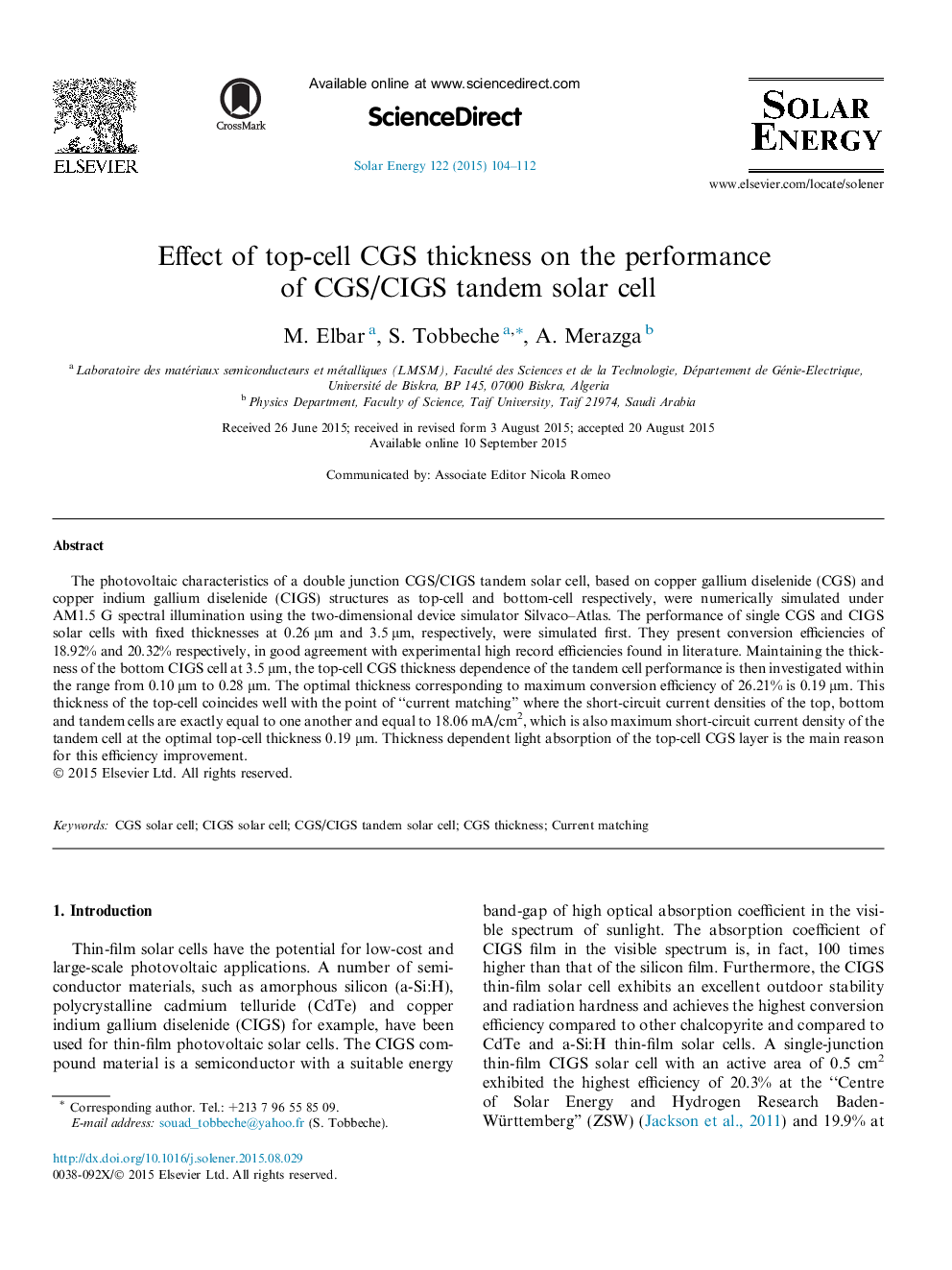| Article ID | Journal | Published Year | Pages | File Type |
|---|---|---|---|---|
| 1549567 | Solar Energy | 2015 | 9 Pages |
•We simulated optimized single CIGS and CGS solar cells using Silvaco–Atlas software.•20.3% and 18.9% simulated efficiencies agree well with those achieved experimentally.•CGS/CIGS tandem solar cell showed an enhancement of the efficiency to 25.11%.•We considered the top-cell thickness to further improve the tandem cell performance.•Maximum 26.21% at 0.19 μm which coincides to top and bottom current matching point.
The photovoltaic characteristics of a double junction CGS/CIGS tandem solar cell, based on copper gallium diselenide (CGS) and copper indium gallium diselenide (CIGS) structures as top-cell and bottom-cell respectively, were numerically simulated under AM1.5 G spectral illumination using the two-dimensional device simulator Silvaco–Atlas. The performance of single CGS and CIGS solar cells with fixed thicknesses at 0.26 μm and 3.5 μm, respectively, were simulated first. They present conversion efficiencies of 18.92% and 20.32% respectively, in good agreement with experimental high record efficiencies found in literature. Maintaining the thickness of the bottom CIGS cell at 3.5 μm, the top-cell CGS thickness dependence of the tandem cell performance is then investigated within the range from 0.10 μm to 0.28 μm. The optimal thickness corresponding to maximum conversion efficiency of 26.21% is 0.19 μm. This thickness of the top-cell coincides well with the point of “current matching” where the short-circuit current densities of the top, bottom and tandem cells are exactly equal to one another and equal to 18.06 mA/cm2, which is also maximum short-circuit current density of the tandem cell at the optimal top-cell thickness 0.19 μm. Thickness dependent light absorption of the top-cell CGS layer is the main reason for this efficiency improvement.
